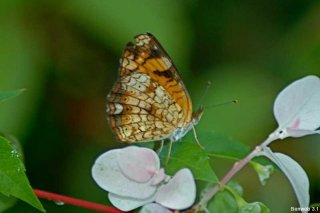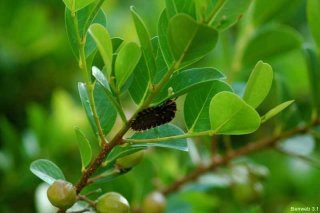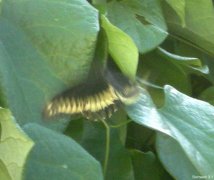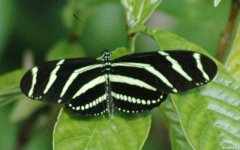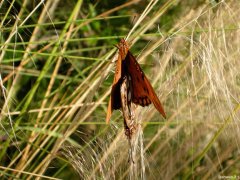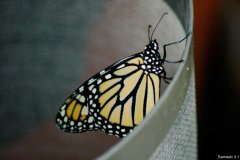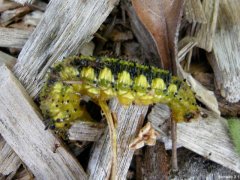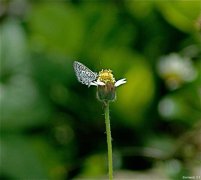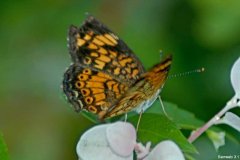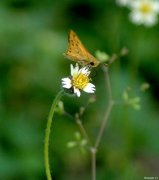As May draws to a close, the butterfly season really starts to ramp up, both here and across the country. Everyone should be getting ready to go on the NABA butterfly count July 4th. (As usual, I’ve missed the “newsy” event: this year, NABA began holding Memorial Day counts, which are much less organized, but no less fun!).
Being a rather stay-at-home kind of naturalist, I’ve taken to listing the species found in my yard. So far it’s a rather short kind of list, but on the very last day of May I was able to add one completely new yard species, and a new behavior observation…
The new butterfly to the yard is the Pearl Crescent (Phyciodes tharos), one of the most abundant and widespread species in the United States. That doesn’t make the spotting of it in my yard any the less exciting, though, because it is the first time that it’s been there. That is, if you subscribe to the tree-falling-in-the-woods-does-NOT-make-a-sound theory, unless someone’s there to hear it. This may be a fantastically common species in my backyard, but I’ve never noticed it until now…
The new behavior regards the most common butterfly in our yard: Polydamas swallowtail (Battas polydamas). It’s the most abundant because its population of larval host plant, Dutchman’s pipe (Aristolochia vine) is extremely abdundant on our chain link fence. But what I’d never before been able to see is where these little guys go to pupate. I finally found a caterpillar on a bit of cocoplum fairly far (a couple of yards, at least) from the Dutchman’s pipe:
I’m fairly sure it’s going to pupate there, but I won’t be able to tell for sure for a couple of days…
So, without further ado, here is my photographic yard list of butterflies:
Polydamas swallowtail:
Zebra heliconian:
Gulf fritillary:
Monarch:
Orange-barred sulfur:
Cassius blue:
Pearl crescent:
Fiery skipper:
These are just the pictures I have from my backyard; for more pictures, and more species, go to my butterfly page.

